SAANANE ISLAND NATIONAL PARK
This will be the first National Park to be located within the City. Saanane Island Proposed National Park will be the second National Park in Lake Victoria after Rubondo Island National Park.
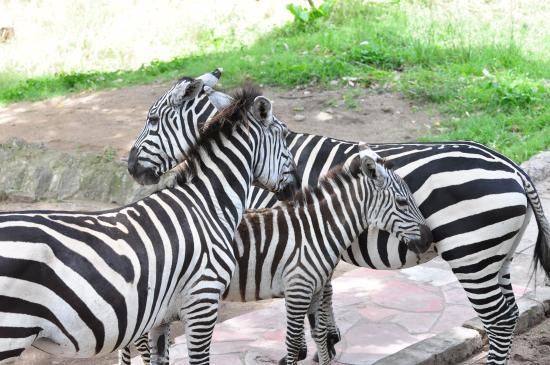
Saanane Island National Park was named after Mzee Saanane Chawandi who was then the owner of the island. It was established as the first Zoo in Tanzania in 1964. Its main objectives were firstly to promote interest and conservation education in Wildlife, secondly was to promote recreation to the people of Mwanza town. Between 1964 and 1966 different species of Wild animals were ferried to the Island.
These included: Buffalo, Bushbuck, Dik Dik, Elephant, Eland. Impala, Black Rhino, Topi, Warthog, Wildebeast, Zebra, and Monkeys like Patas and Vervet, Giraffe, Porcupine and crocodiles. Dangerous animals like Rhinos and Buffaloes were caged while others were in free range. The Island was given the status to be Game Reserve in 1991.
The great Lake Victoria forms amazing attraction sight. Wildlife species like Impala, Crocodiles, Clawless otter, Rock Hyrax, Tortoise, Agama Lizards, commonly known as Agama Mwanzae, and Snakes particularly python. Others include Lion, spotted Hyena, Vervet Monkeys and a very Shy De Brazza’s Monkey. About 40 species of residents and migratory birds are common in the Island.
Saanane Island National Park forms spectacular scenery over Mwanza south and Lake Victoria.
SAADANI NATIONAL PARK
Palm trees sway in a cooling oceanic breeze. White sand and blue water sparkle alluringly beneath the tropical sun. Traditional dhows sail slowly past, propelled by billowing white sails, while Swahili fishermen cast their nets below a brilliant red sunrise.
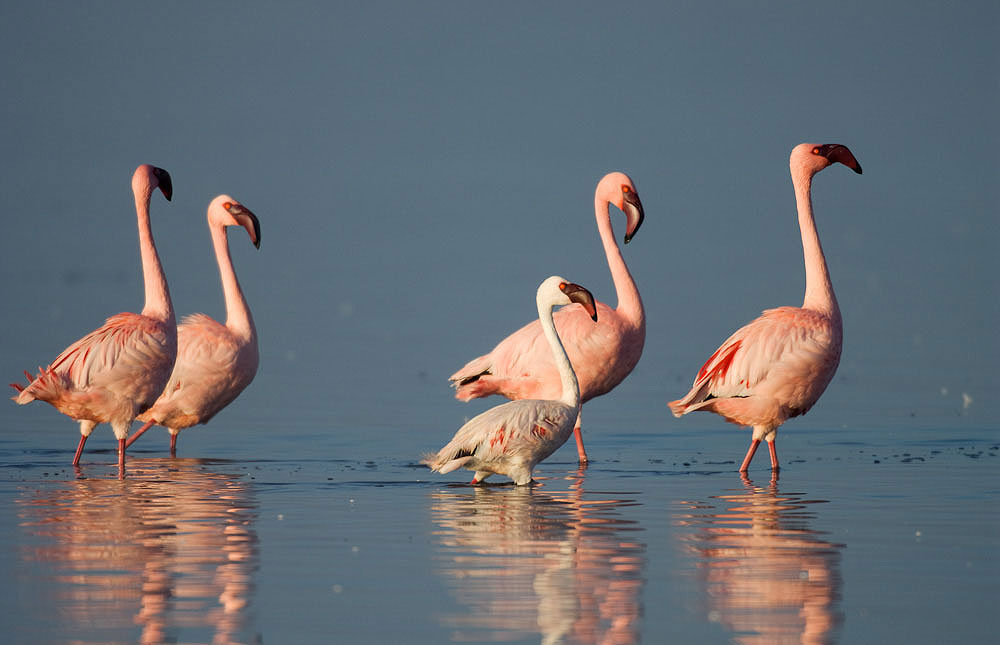
Saadani is where the beach meets the bush. The only wildlife sanctuary in East Africa to boast an Indian Ocean beachfront, it possesses all the attributes that make Tanzania’s tropical coastline and islands so popular with European sun-worshippers. Yet it is also the one place where those idle hours of sunbathing might be interrupted by an elephant strolling past, or a lion coming to drink at the nearby waterhole!
Protected as a game reserve since the 1960s, Saadani was gazetted as a national park in 2002, when it was expanded to cover twice its former area. The reserve suffered greatly from poaching prior to the late 1990s, but recent years have seen a marked turnaround, due to a concerted clampdown on poachers, based on integrating adjacent villages into the conservation drive.
Today, a surprisingly wide range of grazers and primates is seen on game drives and walks, among them giraffe, buffalo, warthog, common waterbuck, reedbuck, hartebeest, wildebeest, red duiker, greater kudu, eland, sable antelope, yellow baboon and vervet monkey. Herds of up to 30 elephants are encountered with increasing frequency, and several lion prides are resident, together with leopard, spotted hyena and black-backed jackal. Boat trips on the mangrove-lined Wami River come with a high chance of sighting hippos, crocodiles and a selection of marine and riverine birds, including the mangrove kingfisher and lesser flamingo, while the beaches form one of the last major green turtle breeding sites on mainland Tanzania.
MAHALE NATIONAL PARK
Set deep in the heart of the African interior, inaccessible by road and only 100 km (60 miles) south of where Stanley uttered that immortal greeting “Doctor Livingstone, I presume”, is a scene reminiscent of an Indian Ocean island beach idyll. Silky white coves hem in the azure waters of Lake Tanganyika, overshadowed by a chain of wild, jungle-draped peaks towering almost 2 km above the shore: the remote and mysterious Mahale Mountains.
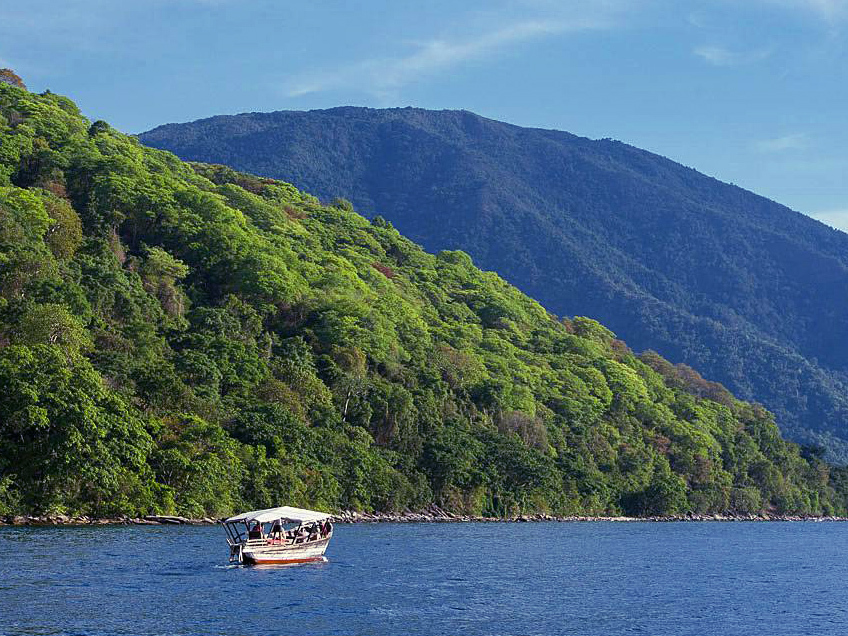
Mahale Mountains, like its northerly neighbour Gombe Stream, is home to some of Africa’s last remaining wild chimpanzees: a population of roughly 800, habituated to human visitors by a Japanese research project founded in the 1960s. Tracking the chimps of Mahale is a magical experience. The guide’s eyes pick out last night’s nests – shadowy clumps high in a gallery of trees crowding the sky.
Scraps of half-eaten fruit and fresh dung become valuable clues, leading deeper into the forest. Butterflies flit in the dappled sunlight. Then suddenly you are in their midst: preening each other’s glossy coats in concentrated huddles, squabbling noisily, or bounding into the trees to swing effortlessly between the vines.
The area is also known as Nkungwe, after the park’s largest mountain, held sacred by the local Tongwe people, and at 2,460 metres (8,069 ft) the highest of the six prominent points that make up the Mahale Range. And while chimpanzees are the star attraction, the slopes support a diverse forest fauna, including readily observed troops of red colobus, red-tailed and blue monkeys, and a kaleidoscopic array of colourful forest birds.
You can trace the Tongwe people’s ancient pilgrimage to the mountain spirits, hiking through the montane rainforest belt – home to an endemic race of Angola colobus monkey – to high grassy ridges chequered with alpine bamboo. Then bathe in the impossibly clear waters of the world’s longest, second-deepest and least-polluted freshwater lake – harbouring an estimated 1,000 fish species – before returning as you came, by boat.
RUBONDO NATIONAL PARK
A pair of fish eagles guards the gentle bay, their distinctive black, white and chestnut feather pattern gleaming boldly in the morning sun. Suddenly, the birds toss back their heads in a piercing, evocative duet. On the sandbank below, a well-fed monster of a crocodile snaps to life, startled from its nap. It stampedes through the crunchy undergrowth, crashing into the water in front of the boat, invisible except for a pair of sentry-post eyes that peek menacingly above the surface to monitor our movements.
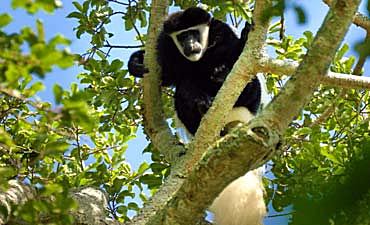
Rubondo Island is tucked in the southwest corner of Lake Victoria, the world’s second-largest lake, an inland sea sprawling between Tanzania, Uganda and Kenya. With eleven smaller islands under its wing, Rubondo protects precious fish breeding grounds. Tasty tilapia form the staple diet of the yellow-spotted otters that frolic in the island’s rocky coves, while rapacious Nile perch, some weighing more than 100kg, tempt recreational game fishermen seeking world record catches.
Rubondo is more than a water wonderland. Deserted sandy beaches nestle against a cloak of virgin forest, where dappled bushbuck move fleet yet silent through a maze of tamarinds, wild palms, and sycamore figs strung with a cage of trailing taproots. The shaggy-coated aquatic sitatunga, elsewhere the most elusive of antelopes, is remarkably easily observed, not only in the papyrus swamps it normally inhabits, but also in the forest interior.
Birds are everywhere. Flocks of African grey parrots – released onto the island after they were confiscated from illegal exporters – screech in comic discord as they flap furiously between the trees. The azure brilliance of a malachite kingfisher perched low on the reeds competes with the glamorous, flowing tail of a paradise flycatcher as it flits through the lakeshore forest. Herons, storks and spoonbills proliferate in the swampy lake fringes, supplemented by thousands of Eurasian migrants during the northern winter. Scents of wild jasmine, 40 different orchids and a smorgasbord of sweet, indefinable smells emanate from the forest.
Ninety percent of the park is humid forest; the remainder ranges from open grassland to lakeside papyrus beds. A number of indigenous mammal species – hippo, vervet monkey, genet and mongoose – share their protected habitat with introduced species such as chimpanzee, black-and-white colobus, elephant and giraffe, all of which benefit from Rubondo’s inaccessibility.
GOMBE NATIONAL PARK
An excited whoop erupts from deep in the forest, boosted immediately by a dozen other voices, rising in volume and tempo and pitch to a frenzied shrieking crescendo. It is the famous ‘panthoot’ call: a bonding ritual that allows the participants to identify each other through their individual vocal stylizations. To the human listener, walking through the ancient forests of Gombe Stream, this spine-chilling outburst is also an indicator of imminent visual contact with man’s closest genetic relative: the chimpanzee
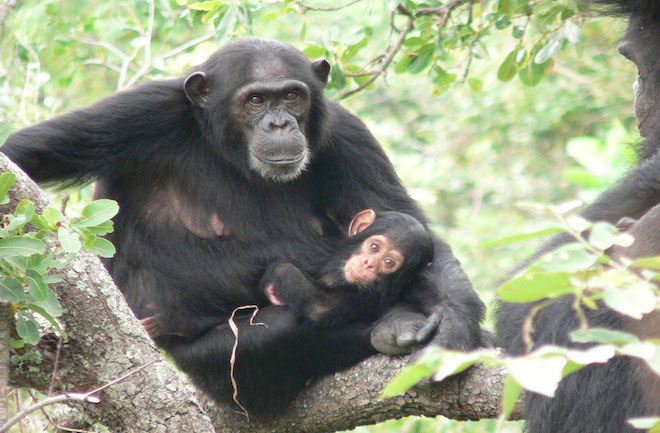
Gombe is the smallest of Tanzania’s national parks: a fragile strip of chimpanzee habitat straddling the steep slopes and river valleys that hem in the sandy northern shore of Lake Tanganyika.
Its chimpanzees – habituated to human visitors – were made famous by the pioneering work of Dr. Jane Goodall, who in 1960 founded a behavioural research program that now stands as the longest -running study of its kind in the world. The matriarch Fifi, the last surviving member of the original community, only three-years old when Dr. Jane Goodall first set foot in Gombe, born 1958 and died in 2004.
Chimpanzees share about 98% of their genes with humans, and no scientific expertise is required to distinguish between the individual repertoires of pants, hoots and screams that define the celebrities, the powerbrokers, and the supporting characters. Perhaps you will see a flicker of understanding when you look into a chimp’s eyes, assessing you in return – a look of apparent recognition across the narrowest of species barriers.
The most visible of Gombe’s other mammals are also primates. A troop of beachcomber olive baboons, under study since the 1960s, is exceptionally habituated, while red-tailed and red colobus monkeys – the latter regularly hunted by chimps – stick to the forest canopy. The park’s 200-odd bird species range from the iconic fish eagle to the jewel-like
Peter’s twin spots that hop tamely around the visitors’ centre. After dusk, a dazzling night sky is complemented by the lanterns of hundreds of small wooden boats, bobbing on the lake like a sprawling city.